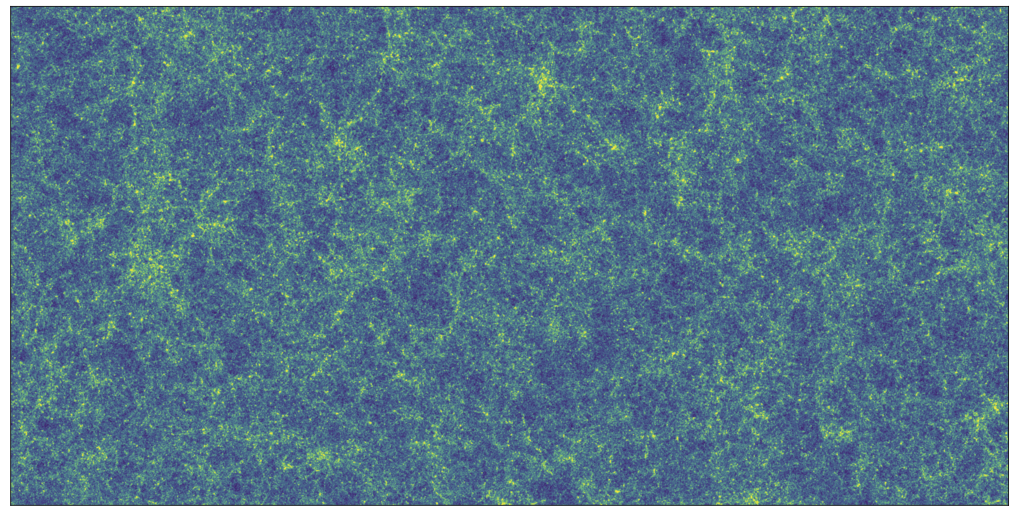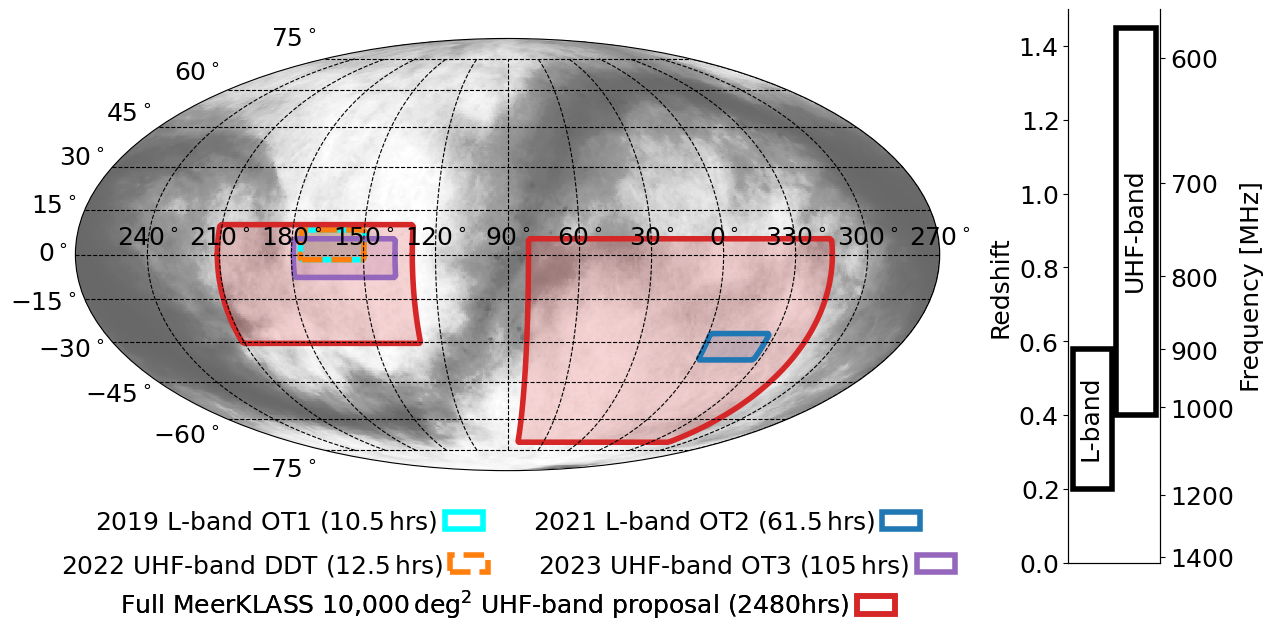
 MeerKAT Large Area Synoptic Survey
MeerKAT Large Area Synoptic Survey
We show a map of our current observations in the map on the right. We have two fields with L-Band observations, and multiple on-going observations in the UHF band.
| Band | RA range | Dec range | Year |
| L-Band | 153 < RA < 172 | -1 < DEC < 8 | 2019 |
| L-Band | 330 < RA < 360 | -36 < DEC < -25 | 2021 |
| UHF-Band | 130 < RA < 165 | -8 < DEC < 5 | 2023 |
| UHF-Band | 150 < RA < 190 | -8 < DEC < 5 | 2023 |
